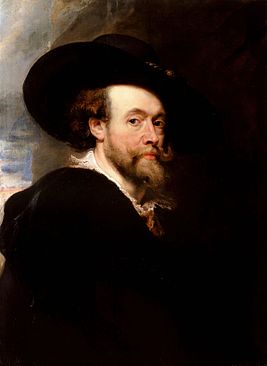

Peter Paul Rubens was born June 28, 1577 in the family of the Antwerp lawyer. The boy received an excellent education, he knew six languages, was smart and courteous, so he became a page, which opened up great prospects for him. However, Rubens wished to devote himself to painting. He became a pupil of the court painter Otto van Veen, whose wide range of interests strongly influenced the development of Rubens not only as an artist, but also as a person. In 1598, Rubens completed his studies and two years later, as was customary with Dutch painters, went to Italy, where he entered the service of Duke Vincenzo Gonzaga.
In Mantua, Rubens not only copied the works of old masters, but also carried out certain diplomatic missions, in particular, made a trip to Spain, accompanying gifts for Philip II and Duke Lerme. The skill of the painter impressed the Spanish court, the Duke of Lerma ordered Rubens his equestrian portrait, which is now in the Prado gallery in Madrid.
At home, Rubens returned already a fairly well-known artist and opened his workshop. He was extraordinarily industrious, there were a lot of orders, but it is especially worthwhile to highlight the grandiose altar paintings created by him for the city’s cathedral of Antwerp.
Rubens was called “the king of artists and the artist of kings”, and quite rightly. He was an adviser to Isabella of Spain, Maria Medici ordered pictures from him for the decoration of the Luxembourg Palace, he conducted peace negotiations with Charles I and created paintings for the White Hill Palace, for which he was promoted to the knight by the English king.